Flowers have been a significant part of the fashion industry for centuries. From floral patterns on clothing to floral accessories, flowers have always been a popular choice among designers. In recent years, the use of flowers in fashion has become even more prevalent, with designers using them in innovative ways to create stunning and unique pieces.
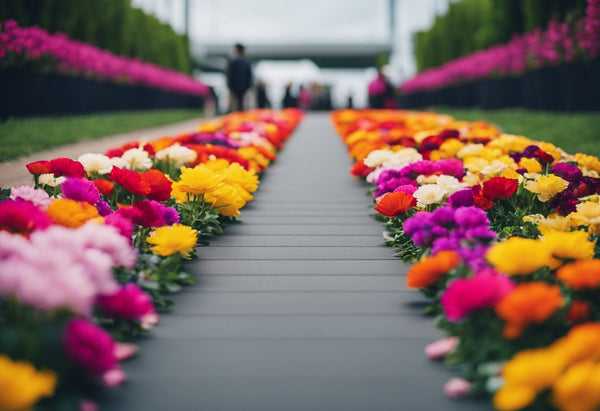
In addition to prints, flowers are also used in fashion as accessories. Flower crowns, for example, have become a popular accessory for music festivals and weddings. They add a bohemian touch to any outfit and are a great way to incorporate flowers into your look. Other floral accessories include brooches, boutonniere, hair clips, and even shoes adorned with floral embellishments.
Historical Influence of Flowers in Fashion
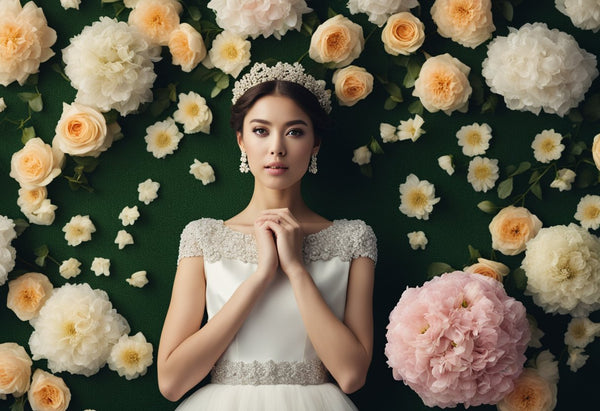
Victorian Floral Motifs
During the Victorian era, flowers were a popular motif in fashion. Women's clothing was adorned with intricate floral patterns, often with a romantic or sentimental meaning behind them. The use of floral motifs in fashion was also influenced by the popular interest in botany and the study of flowers during that time.
Art Nouveau and the Floral Revolution
In the late 19th and early 20th centuries, the Art Nouveau movement emerged, which celebrated the beauty of nature and incorporated organic forms into art and design. The use of floral motifs in fashion was a natural fit for this movement, and designers began to experiment with new ways of incorporating flowers into their designs. This period marked the beginning of what is often referred to as the "floral revolution" in fashion.
1960s Flower Power Impact
In the 1960s, the flower power movement emerged, which celebrated peace, love, and harmony. This movement had a significant impact on fashion, with designers incorporating bold floral patterns into their designs. The use of flowers in fashion during this time was seen as a way to express individuality and freedom, and it became a symbol of the counterculture movement.
Overall, the historical influence of flowers in fashion has been significant, with floral motifs and patterns remaining popular to this day. From the romantic floral motifs of the Victorian era to the bold flower power patterns of the 1960s, flowers have played an important role in shaping fashion trends throughout history.
Floral Patterns and Textile Design

Floral patterns have been a staple in the fashion industry for centuries. The use of floral designs in textile design has evolved with the advancement of technology and the growing demand for sustainability.
Digital Printing Innovations
Digital printing has revolutionized the textile industry, allowing for intricate and detailed floral designs to be printed on a variety of fabrics. This technology has made it possible to create unique and personalized floral patterns that were previously impossible to achieve. Digital printing also reduces waste and allows for more efficient production processes.
Sustainable Natural Dyes
The fashion industry is becoming increasingly aware of the environmental impact of textile production. As a result, sustainable natural dyes are gaining popularity. Many designers are turning to natural dyes made from flowers, plants, and other natural sources to create beautiful and eco-friendly floral designs. These natural dyes not only reduce the environmental impact of textile production but also create unique and vibrant colors that cannot be achieved with synthetic dyes.
In conclusion, floral patterns in textile design continue to be a popular and timeless trend in the fashion industry. With the advancement of technology and the growing demand for sustainability, floral designs are evolving and becoming more innovative and eco-friendly.
Floral Symbolism in Apparel
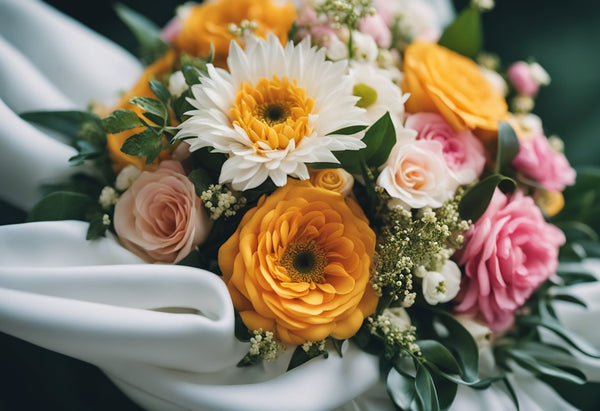
Cultural Significance
Flowers have been used as symbols in fashion for centuries, representing different cultural significances. In many cultures, certain flowers are associated with specific meanings. For example, in Japan, the cherry blossom represents the transience of life. In India, the marigold is a symbol of purity and happiness. In Western culture, the rose is often associated with love and passion.
Clothing adorned with floral patterns can also be used to evoke a certain mood or feeling. For example, bright and bold floral prints can create a cheerful and playful vibe, while muted and delicate floral patterns can create a more romantic and feminine look.
Modern Brand Identities
In recent years, many fashion brands have incorporated floral motifs into their branding and marketing efforts. These brands often use flowers to convey a sense of elegance, femininity, and natural beauty.
One example of a brand that has successfully incorporated floral symbolism into their identity is Gucci. The brand's iconic floral pattern, known as the Flora print, was first introduced in the 1960s and has since become synonymous with the brand. The Flora print has been used on everything from clothing to accessories to fragrances, and has helped to cement Gucci's reputation as a luxury fashion brand.
Other brands, such as Dolce & Gabbana and Kate Spade, have also used floral motifs to great effect in their branding and marketing efforts. These brands have successfully leveraged the cultural significance of flowers to create a sense of luxury and sophistication, while also appealing to consumers' desire for natural beauty and femininity.
Accessories and Embellishments
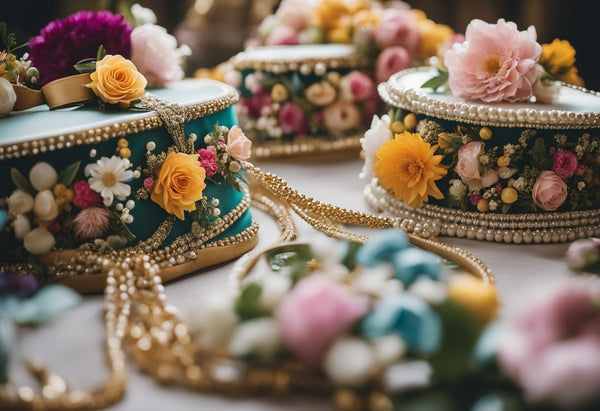
Flower-Inspired Jewelry
Flower-inspired jewelry has been a popular trend in the fashion industry for decades. From delicate floral necklaces to bold statement earrings, these pieces add a touch of nature to any outfit. Flower-inspired jewelry can be made from a variety of materials, including precious metals, gemstones, and even fabric.
One popular type of flower-inspired jewelry is the floral brooch. These pins can be worn on a lapel, scarf, or even a hat to add a pop of color and interest to an outfit. Another popular type of flower-inspired jewelry is the floral pendant necklace. These necklaces often feature a single flower or a cluster of flowers as the centerpiece.
Headpieces and Floral Crowns
Headpieces and floral crowns have become a staple in the fashion industry, particularly during the spring and summer months. These accessories can be worn with a variety of outfits, from bohemian dresses to casual jeans and t-shirts.
Floral crowns are typically made from fresh or artificial flowers and can be customized to match any outfit. They can be worn as a statement piece or as a subtle accent to a hairstyle. Headpieces, on the other hand, can be made from a variety of materials, including metal, fabric, and even feathers. They can be worn as a headband, tiara, or even a full headpiece for a dramatic effect.
Whether you prefer delicate flower-inspired jewelry or bold headpieces and floral crowns, there are plenty of options available to add a touch of nature to your wardrobe.
Flowers in Fashion Events and Shows
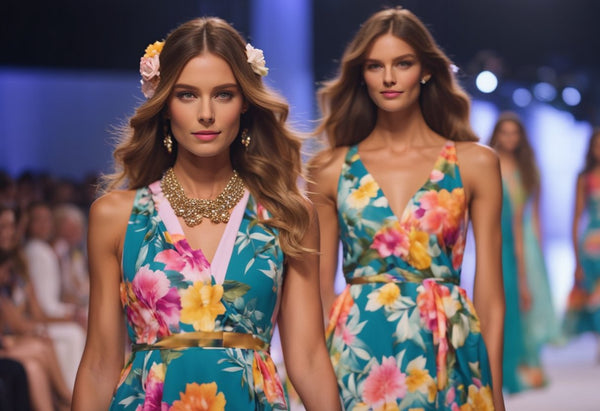
Runway Decorations
In the fashion industry, flowers are not just limited to clothing and accessories, but they also play a significant role in the decoration of fashion events and shows. Runways are often adorned with various types of flowers, such as roses, lilies, and orchids, to create an elegant and luxurious ambiance.
Flower arrangements are strategically placed along the runway to complement the fashion collections being showcased. The colors of the flowers are often chosen to match the color palette of the clothing, creating a cohesive and visually appealing display.
Themed Fashion Collections
Flowers have also been used as a source of inspiration for themed fashion collections. Designers have drawn inspiration from various types of flowers, such as the rose, daisy, and sunflower, to create unique and beautiful collections.
For example, a designer may create a collection inspired by the vibrant colors and patterns of a field of wildflowers. The collection may feature floral prints, embroidery, and appliques, all inspired by the natural beauty of the flowers.
In conclusion, flowers have become an integral part of the fashion industry, not only in clothing and accessories but also in fashion events and shows. From runway decorations to themed fashion collections, flowers continue to inspire and captivate designers and fashion enthusiasts alike.
Frequently Asked Questions
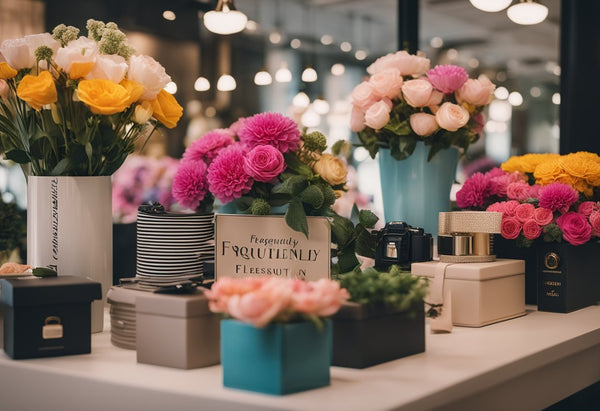
How do flowers influence the design choices of fashion designers?
Flowers have long been a source of inspiration for fashion designers. The colors, shapes, and textures of flowers can be incorporated into clothing designs in a variety of ways. Some designers may use floral prints or patterns in their designs, while others may use actual flowers as embellishments on garments. The use of flowers in fashion can create a romantic, feminine, or whimsical aesthetic.
Which iconic fashion moments have prominently featured floral designs?
Floral designs have been a prominent feature in many iconic fashion moments. One example is the floral dress worn by Audrey Hepburn in the film "Sabrina" (1954), which has become an iconic piece of fashion history. Another example is the floral dress worn by Princess Diana on her wedding day in 1981, which has inspired many wedding dress designs since.
What symbolism is often associated with the use of flowers in fashion?
The symbolism associated with flowers can vary depending on the type of flower used. For example, roses are often associated with love and passion, while daisies are associated with innocence and purity. In fashion, the use of flowers can convey a sense of femininity, beauty, and grace.
Can you trace the evolution of floral patterns in fashion history?
Floral patterns have been used in fashion for centuries. In the 18th century, floral patterns were popular in European fashion, often featuring intricate floral designs on silk fabrics. In the 1960s, floral patterns became popular in the United States during the "flower power" movement. Today, floral patterns continue to be a popular choice in fashion, with designers incorporating them in a variety of ways.
How do fashion brands incorporate floral motifs into their branding and identity?
Fashion brands may incorporate floral motifs into their branding and identity in a variety of ways. For example, a brand may use a specific flower as part of their logo or incorporate floral designs into their packaging or advertising campaigns. The use of floral motifs can help create a distinct brand identity and appeal to consumers who are drawn to the beauty and elegance of flowers.
In what ways has nature, beyond just flowers, inspired fashion collections?
Nature has inspired fashion collections in many ways beyond just flowers. Some designers may draw inspiration from natural landscapes, incorporating earthy tones and textures into their designs. Others may be inspired by animals or insects, using prints or patterns to create a unique look. The use of natural materials, such as leather or fur, can also be inspired by nature.
